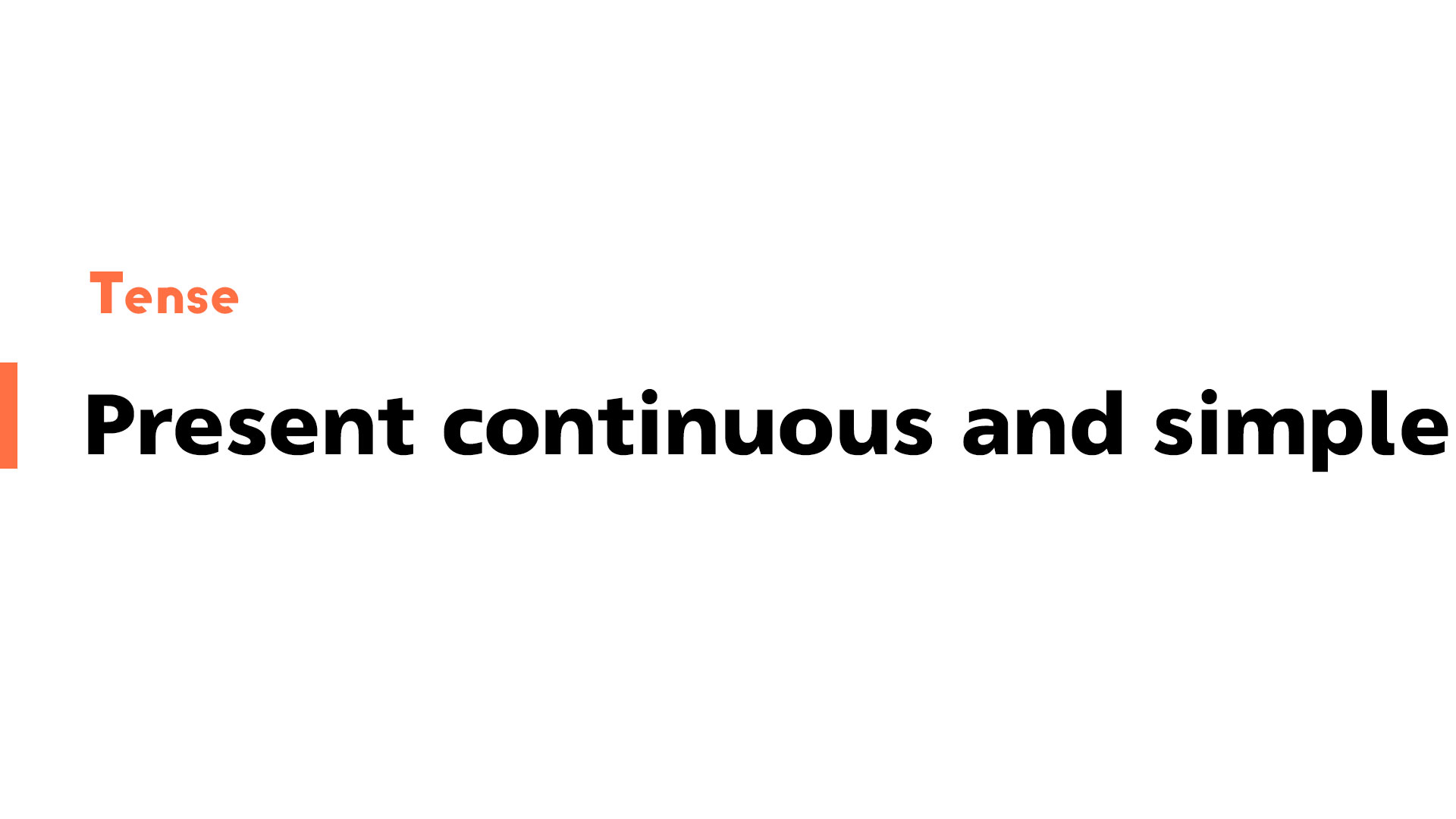Present continuous and present simple Compare:
| present continuous | present simple |
| We use the continuous for things happening at or around the time of speaking.The action is not complete. | We use the simple for things in general or things that happen repeatedly. |
| The water is boiling. Be careful. | Water boils at 100 degrees Celsius. |
| Listen to those people. What language are they speaking? | Excuse me, do you speak English? |
| Let’s go out. It isn’t raining now. | It doesn’t rain very much in summer. |
| We use the continuous for temporary situations (things that continue for a short time): | We use the simple for permanent situations (things that continue for a long time): |
| I’m living with some friends until I find a place of my own. | My parents live in London. They have lived there all their lives. |
See more about present continuous and present simple.
How to use I always do and I’m always doing in Present continuous and present simple
I always do something = I do it every time: For example:I always go to work by car. (not I’m always going)
I’m always doing something = I do it too oft en or more oft en than normal.
For example: I’ve lost my keys again. I’m always losing them.
I’m always losing them = I lose them too oft en,or more oft en than normal.
Paul is never satisfied. He’s always complaining. (= he complains too much)
We use continuous forms (I’m waiting, it’s raining etc.) for actions and happenings that have started but not finished.
Some verbs (for example, know and like) are not normally used in this way. We don’t say ‘I am knowing’, ‘they are liking’. We say ‘I know’, ‘they like’.
| The following verbs are not normally used in the present continuous: |
| like | know | believe | belong |
| want | realise | suppose | fit |
| need | understand | remember | contain |
| prefer | recognise | mean | consist |
| seem |
For example:
- I’m hungry. I want something to eat. (not I’m wanting)
- Do you understand what I mean?
think
When think means ‘believe’ or ‘have an opinion’, we do not use the continuous:
- I think Mary is Canadian, but I’m not sure. (not I’m thinking)
- What do you think of my idea? (= what is your opinion?)
When think means ‘consider’, the continuous is possible:
- I’m thinking about what happened. I often think about it.
- Nicky is thinking of giving up her job. (= she is considering it)
| see | hear | smell | taste | look | feel |
We normally use the present simple (not continuous) with see/hear/smell/taste:
- Do you see that man over there? (not are you seeing)
- The room smells. Let’s open a window.
You can use the present simple or continuous to say how somebody looks or feels now:
- You look well today. or You’re looking well today.
- How do you feel now? or How are you feeling now?
but
- I usually feel tired in the morning. (not I’m usually feeling)
am/is/are being
You can say he’s being … , you’re being … etc. to say how somebody is behaving now:
- I can’t understand why he’s being so selfish. He isn’t usually like that. (being selfish = behaving selfishly now)
- ‘The path is icy. Don’t slip.’ ‘Don’t worry. I’m being very careful.’
Compare:
- He never thinks about other people. He’s very selfish.(= he is selfish generally, not only now)
- I don’t like to take risks. I’m a very careful person.
We use am/is/are being to say how a person is behaving (= doing something they can control) now.
It is not usually possible in other situations:
- Sam is ill. (not is being ill)
- Are you tired? (not are you being tired)






